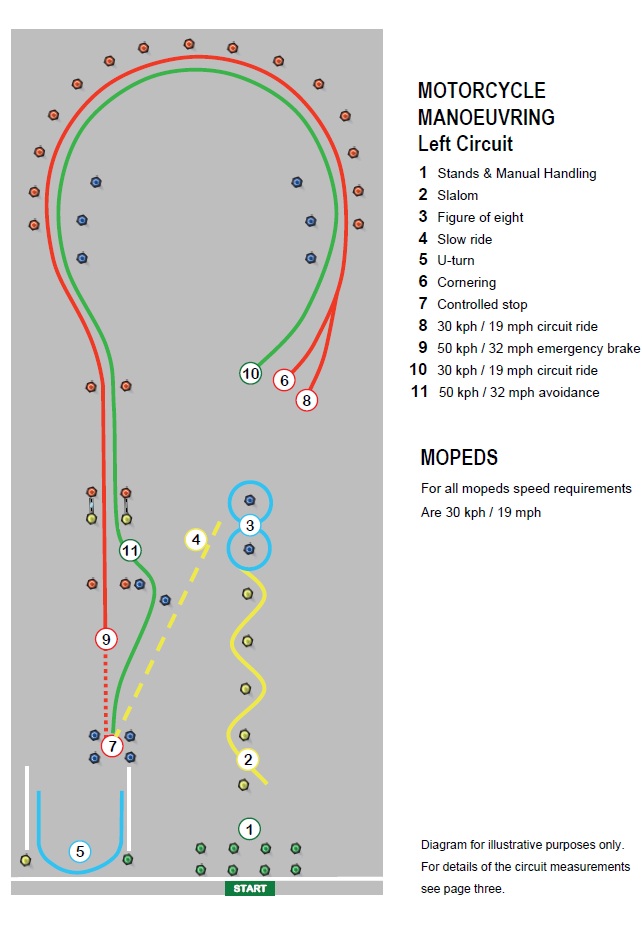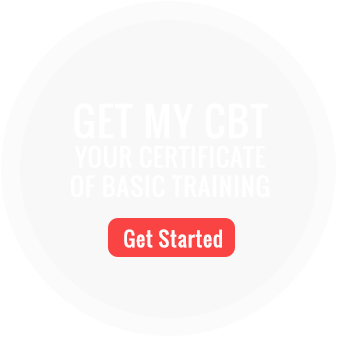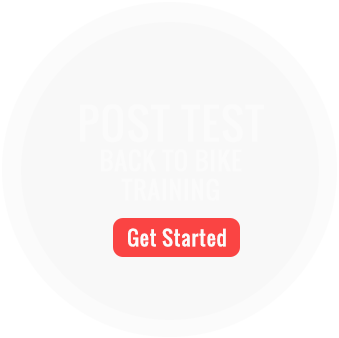You should have practised this dozens of times during your training, but like all slow control manoeuvres you need to have good control of the clutch. Make sure there is adequate revs so the motorcycle doesn’t stall, then use the clutch lever to adjust your speed. If you find that you have a little too much speed then dip the clutch and apply the rear brake. If you feel that you are losing your balance then speed up by letting the clutch out. The movement of the clutch is essential for control but it needs to be very subtle. Remember look where you want to go, and try not to make the turns in and out of the cones too exaggerated. The figure of eight can be done as wide as you like within reason, so make it easy by making a wide turn (this is done around two blue cones, you can go back round the final yellow cone but this runs the risk of hitting it). Try to pass as close as possible to the furthest blue cone each time you pass between them. Don’t use the front brake ever in this situation or during any slow control exercise.
Taking your Module 1 motorcycle test explained

Everything you need to know about the pitfalls of taking your Motorcycle Test Module 1
The right paperwork!
Too many people go to their test without the right paperwork and lose their test fee before they have even started.
You will need:
- A current in date correctly filled out Compulsory Basic Training (CBT) certificate.
- Your UK driving licence (full or provisional) – make sure it is current (photos only last 10 years) and that you have completed any section for address changes if necessary.
- If you have an old paper licence you must have photo ID (passport).
- Your current in date Motorcycle (category A) Theory Test pass certificate.
- Glasses or contact lenses (if required) to read a number plate from a distance of 20.5 metres
- A motorcycle/scooter that is road legal (taxed, insured and with a current MoT if over 3 years old) displaying full sized L-plates front and rear, fitted with mirrors and that is suitable for the test you wish to take.
- You must turn up at the right time – if you’re late it’s too bad.
Motorcycle Test – Module 1
The two key things the examiner tells you at the start off the test are to 1) treat the test pad “as if you are on a public road, including carrying out all necessary precautions/observations”, 2) not to come into contact with any cones (during a manoeuvre or moving between manouevres). You can incur up to five minor faults, but generally you won’t be allowed to get more than three missed observations. The minimum speed requirement for the emergency stop and swerve is 50 kph, but a pass can be acheived with speeds of 48 or 49kph although this will result in a minor fault. Ideally they should be carried out as close to 50kph as possible. Going too fast is not a fault but can make things considerably trickier.
The first exercise of the Motorcycle Test – Module 1 involves you riding your motorcycle into a coned “bay” formed by four green cones and then parking it on the stand. There are two bays and you can choose which one you ride into. You will then be asked to wheel the machine backwards so that you end up in the other of the two bays. As with all things preparation pays dividends, so parking at an awkward angle will make it difficult to push the motorcycle out backwards. People fail for parking the motorcycle when they rush it, so take your time, make it easy by using the side stand if one is fitted and make sure you hold the front brake. When you push the motorcycle there is no right or wrong way as such, however, it is very, very important to look where you are going to help you turn the handlebars and not lose balance. Again take your time – you are not up against a clock. A common fault here is forgetting to do the lifesaver/observation checks, which you need to do each time before moving.
Frankly what the point of this exercise is it hard to imagine especially as this is the third of four slow control exercises. It is not difficult but does need you to look up and be relaxed on the handlebars. You need to ride at walking pace – the examiner will follow behind you. Be ready with the rear brake to lose excess speed. Be prepared for the fact that the steering may try to “wander” while moving slowly so don’t hold on too tight. If you hold on too tight you will steer into the wobbles and lose balance more easily, so grip the petrol tank with your knees and rest your hands lightly on the controls.
Well hurrah – this utterly pointless nonsense is now at least a good deal easier than it was. For a start it is the same at every test centre, reasonably generous, and secondly it is flat and without kerbs. So the days of the moron who thought the U-turn in Leighton Buzzard (stupidly tight on a hill) was a good idea are gone. We have asked about the white lines and had mixed replies (what a surprise from the DVSA), so our take on it is don’t ride on the white lines. Now that it is so much easier it is easy to forget that the examiner will still want you to look out for imaginary cars before you start to turn. If you like a reasonable run up before turning (and most people do) then start well back to give yourself room and don’t forget the final check before you turn. The actual turn is using exactly the same slow control as was used for the figure of eight. If you feel like you are losing your balance – LET THE CLUTCH OUT. Look where you want to go and as you turn start looking up the “road” to help give you perspective. This is now so much easier, but miss the final check and it will have all been in vain.
In order to pass this exercise with no rider faults you are being asked to ride around a bend and then accelerate down a course marked out by pairs of red cones, reaching a minimum speed of 50kph at the timing beam, before swerving between two blue cones and then braking to finally come to a stop inbetween two other blue cones (see diagram). If you reach a speed of 48 or 49 kph you can pass but will be awarded a rider fault.
Entry into the bend is not nearly as important as the exit. In fact you can make it quite difficult by going too fast into it. Approach the bend in second gear at about 15 mph. Keep in the same gear and look through the bend. The motorcycle may sound utterly hideous, however, if you stay in second gear you will go through the timing beam at about 32 – 33mph (52 – 54kph) which is ideal. Problems may lie in either accelerating far too hard and being unnerved by the prospect of having to swerve thus slowing down too much, or going a little too slowly in the first place. You will, however, be allowed two attempts so do not panic.
As for the swerve itself, the key to success lies in looking where you want to go, and in particular not staring at the left hand blue cone. Hitting this cone is one of the most common reasons that people fail the Module 1 test. Once you have cleared the timing beam between the final red cones and the pair of yellow cones, you should – in this order – throttle off, swerve and only then apply the brakes when you are upright in order to stop between the final pair of blue cones. Progressive use of both brakes makes this fairly straight forward. You can stop short of the final blue cones, but you must be in a position to pass cleanly between the cones if you were to continue riding in a straight line. To remove any possibility of doubt – just stop between the cones.
The key learning objective of this exercise is to separate the steering from braking – you can’t do both at the same time or it will end in tears.
Go into the bend slowly (2nd gear) and look through the corner where you want to go. If you gently accelerate the bike will feel stable and easily controlled. You don’t need to do this fast, just smoothly. The controlled stop can be done at any speed; therefore don’t make it difficult by going too fast. The idea is to get an understanding of the layout prior to doing the faster manoeuvres. Astonishingly a number of people have failed for not stopping in the box of four blue cones. This takes a special talent as this is the easiest manoeuvre.




 Oxford: 01865 777 676
Oxford: 01865 777 676